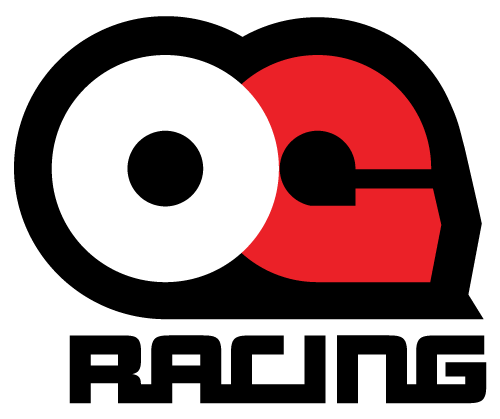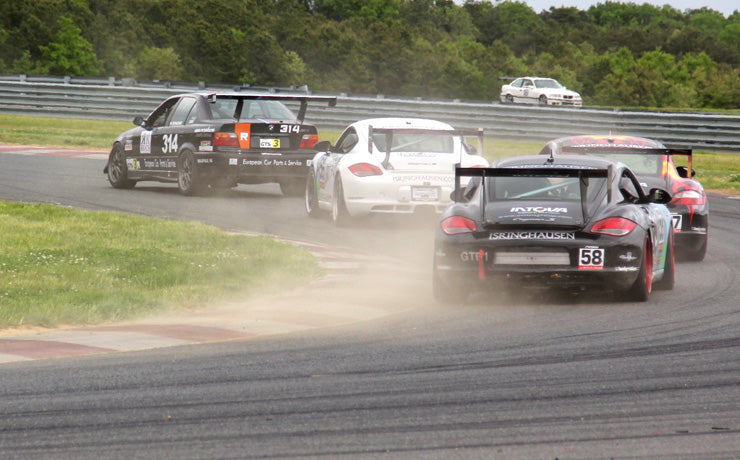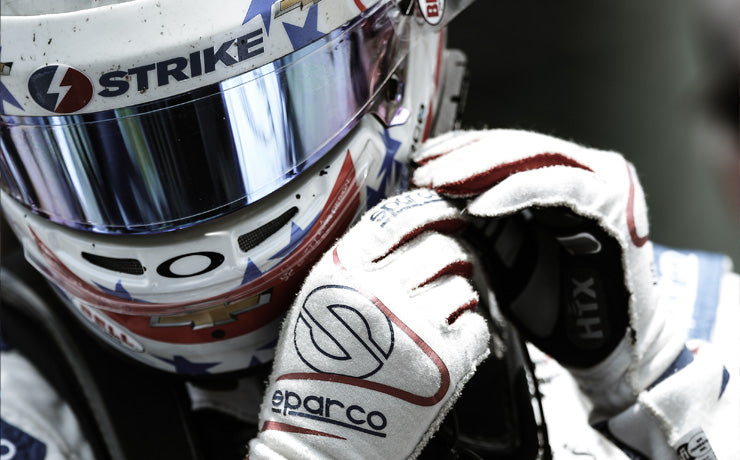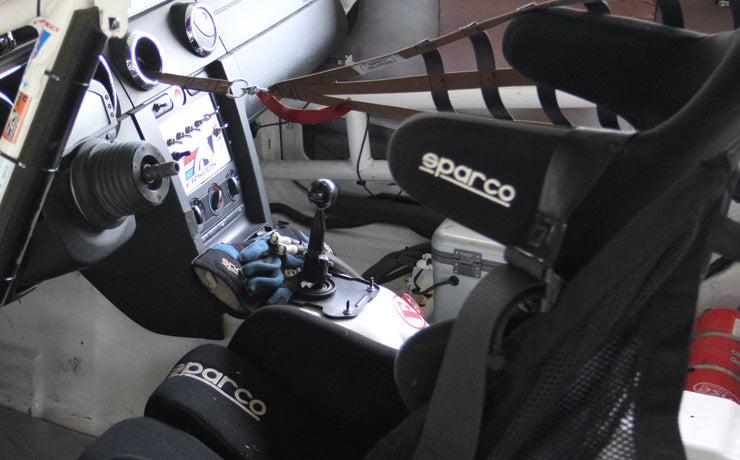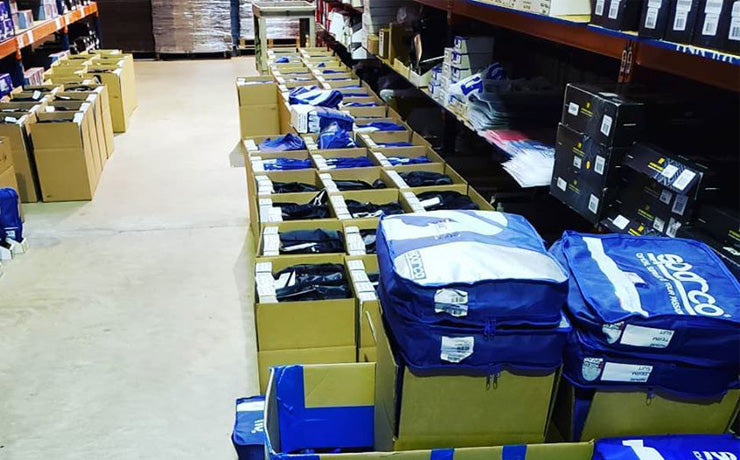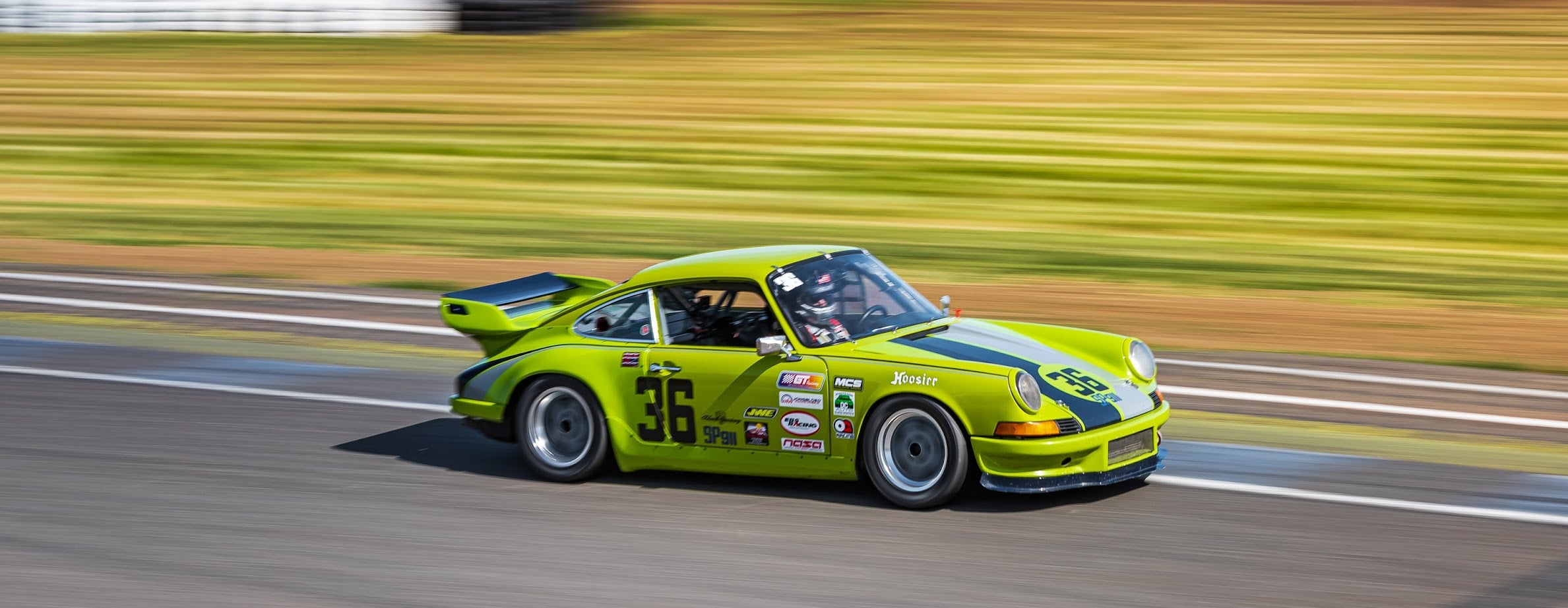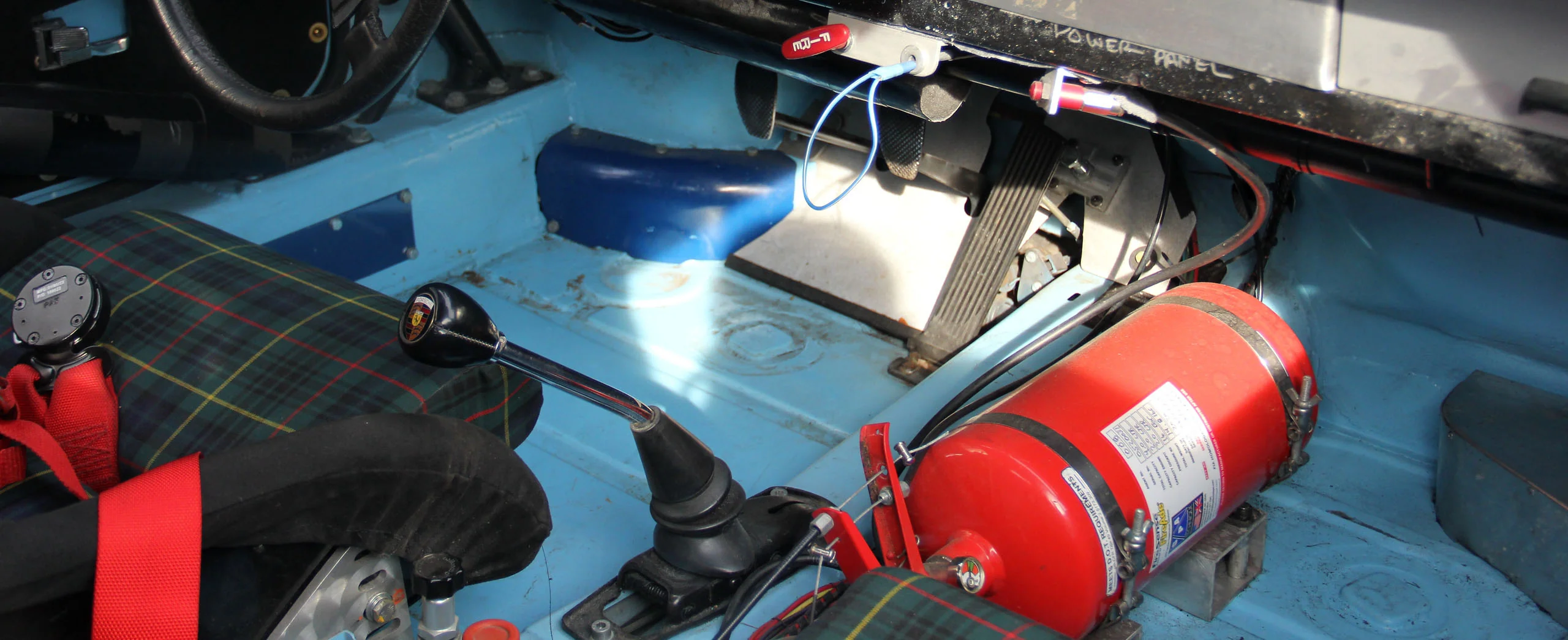
Racing In-Car Fire Suppression Systems 101 - What You Need to Know: A Brief Guide
Fire systems are a significant subject this time of year as many drivers prepare for driver’s school to obtain their competition license, and seasoned racers tackle their off-season to-do list. Off-season projects often include refreshing obsolete safety gear such as harnesses, window nets, and of course, fire bottles! (We have a handy checklist for dated safety gear here).
In this blog, we aim to provide quick and concise answers to the most common questions about fire systems that arise in the racing community. Before making any purchases, be sure to check your racing sanctioning body's regulations and review the rulebook. And if you still have questions, feel free to contact us at 1-800-934-9112 - our expert staff is here to assist you!

Mechanical vs. Electric vs. Automatic Fire System Activation
Deciding between mechanical, electrical, or automatic fire system activation depends on personal preference and budget.
Mechanical Fire Systems: The standard baseline system has two pulls: one inside the car and one outside.
- Pros: Simple, reliable, low failure rate. More challenging to activate accidentally. Lowest price point.
- Cons: If the driver is unconscious, the system cannot be activated. Requires a clean install and annual maintenance.
Electric Fire Systems: Electrical systems come at a higher cost but offer greater flexibility. You can use multiple switches and place the bottle wherever you prefer. It's important to note that being electrical doesn't make a system automatic!
- Pros: Push button activation instead of pull handle. Easier installation compared to mechanical systems.
- Cons: Driver still needs to physically activate the system by pushing a button. Greater chance of accidentally activating the system. Battery replacement, chance for corrosion and failure.
Automatic Fire Systems: Automatic fire suppression systems fire independently once a specific temperature is detected.
- Pros: Customizable activation temperature. Auto detect features can be added on to most electrical systems.
- Cons: Not wallet-friendly.

AFFF vs. ABF vs Novec Fire System Suppressants
"Foam" in fire systems refers to AFFF or ABF. These water-based liquids coat surfaces to eliminate the fire source and oxygen.
AFFF: Aqueous film-forming foam has been on the market since the military introduced it in the 1960s. It is a water-based liquid that detonates as foam. It effectively spreads across the surface of the fire to smother the flame and dissipates well to help prevent reignition.
- Pros: Proven track record of safe fire extinguishing abilities. Budget friendly.
- Cons: Messy clean up and corrosive, especially to electrical components. More advanced alternatives now available (ABF).
ABF: ABF is the newest generation of firefighting foams. This advanced water-based foam delivers the fastest heat absorption and fire knockdown capability available today and is the fire suppressant in our most popular fire system sold at OG Racing, Lifeline's Zero 2020 Fire Marshal FIA Fire System
- Pros: Budget friendly. Delivers the same trusted fire extinguishing capabilities as AFFF but with a smaller, lighter bottle.
- Cons: Messy clean up and corrosive, especially to electrical components.
Novec: Novec is the leading gas-based fire suppressant. It swiftly attacks fire by acting as a super coolant, extracting heat and extinguishing flames rapidly. Fire bottles in Novec systems are more compact due to their lower suppressant requirement.
- Pros: Completely dissipates and requires no clean up. Is harmless to sensitive electronics. Significantly smaller fire system compared to AFFF/ABF.
- Cons: Not wallet friendly due to the high cost of Novec itself.
FIA vs. SFI fire systems
In short, racing organizations typically adhere to FIA or SFI standards. While both prioritize safety, FIA standards are often preferred and what we recommend. Both FIA and SFI prioritize safety, but differ in testing and standards. Read your rulebook! At OG Racing, we do not carry or service SFI bottles or fire systems.

Fire Bottle Servicing
Yes! We service fire bottles for AFFF and ABF systems. ALL fire bottles have a ten-year life span and must be serviced every two years.
Please call before sending your fire bottle in to ensure we have the parts to service it. It’s a 3-5 day turnaround once we get the bottle to OG Racing HQ. Recertification generally starts at $120. Please get in touch with us for further details on how to ship your bottle properly. 1-800-934-9112.
For more information on fire systems please refer to this excellent write up from Jim at No Money Motorsports! Stay Safe out there!
